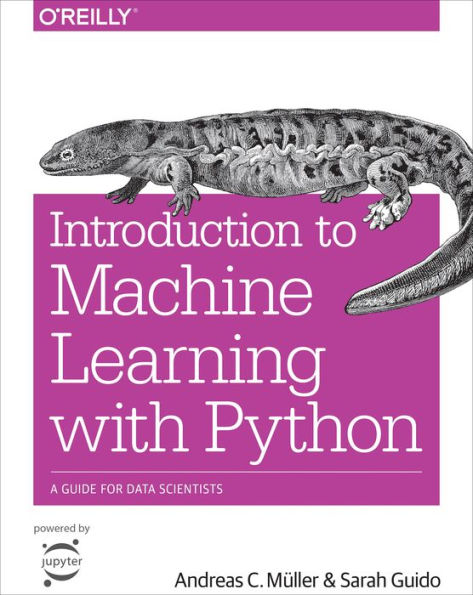You'll learn the steps necessary to create a successful machine-learning application with Python and the scikit-learn library. Authors Andreas Müller and Sarah Guido focus on the practical aspects of using machine learning algorithms, rather than the math behind them. Familiarity with the NumPy and matplotlib libraries will help you get even more from this book.
With this book, you'll learn:
- Fundamental concepts and applications of machine learning
- Advantages and shortcomings of widely used machine learning algorithms
- How to represent data processed by machine learning, including which data aspects to focus on
- Advanced methods for model evaluation and parameter tuning
- The concept of pipelines for chaining models and encapsulating your workflow
- Methods for working with text data, including text-specific processing techniques
- Suggestions for improving your machine learning and data science skills
You'll learn the steps necessary to create a successful machine-learning application with Python and the scikit-learn library. Authors Andreas Müller and Sarah Guido focus on the practical aspects of using machine learning algorithms, rather than the math behind them. Familiarity with the NumPy and matplotlib libraries will help you get even more from this book.
With this book, you'll learn:
- Fundamental concepts and applications of machine learning
- Advantages and shortcomings of widely used machine learning algorithms
- How to represent data processed by machine learning, including which data aspects to focus on
- Advanced methods for model evaluation and parameter tuning
- The concept of pipelines for chaining models and encapsulating your workflow
- Methods for working with text data, including text-specific processing techniques
- Suggestions for improving your machine learning and data science skills

Introduction to Machine Learning with Python: A Guide for Data Scientists
398
Introduction to Machine Learning with Python: A Guide for Data Scientists
398
Product Details
| ISBN-13: | 9781449369415 |
|---|---|
| Publisher: | O'Reilly Media, Incorporated |
| Publication date: | 10/20/2016 |
| Pages: | 398 |
| Product dimensions: | 6.90(w) x 9.10(h) x 0.60(d) |
